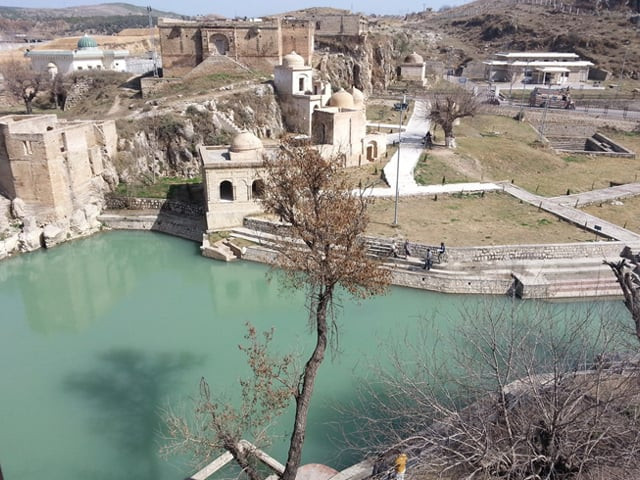
The holy temple is dedicated to Lord Shiva, and is mentioned in Mahabharta as well. The fascinating part is that these are several temples built on a single piece of land close to one another. This complex is situated in Katas village, 40 kilometres from the Chakwal district of Punjab.

Recently, I got a chance to pay a visit to these temples; a place that holds significance not only in Hinduism but in Buddhism as well.


The Pakistani government is considering nominating this temple for the World Heritage Site status, and rightly so, as its history dates back to the time of Ashoka. Furthermore, a Stupa can also be spotted at this site. Stupa, which holds historical significance in Buddhism, is a mound-like structure which has been used by Buddhists since ancient times as a place of meditation.

The site is not only historical but is also serene and attractive at the same time. Therefore, it has the capability of attracting tourists on a larger scale if promoted and maintained well. Thanks to the Pakistani government, the temple is well-maintained and Pakistan should keep up its preservation efforts in the future as well.

Although local tour guides are available for tourists, the government can make the site more tourism-friendly by displaying boards with brief information of every individual temple since each temple has a different name and historical significance.

The pond has been subjected to expansive media attention as well. The historical site can be seen in the frequently aired Q-Mobile adverts. Furthermore, a drama serial named after the temple, ‘Kanpur se Katas Tak’, has also been picturised at this very site.

A few months ago, Pakistani High Commissioner to India, Abdul Basit, sent a pitcher of water from the holy pond of Katas Raj to Indian politician LK Advani, who had visited the site back in 2005 during his visit to Pakistan, as a goodwill gesture.
These temples are a true depiction of what an ancient historical place is ought to be – highly captivating and awe-inspiring.
All in all, it is a site worth-visiting and a place that the tourism industry can promote as part of Pakistan’s captivating ancient historical sites.
All Photos: Kiran Wali



COMMENTS
Comments are moderated and generally will be posted if they are on-topic and not abusive.
For more information, please see our Comments FAQ